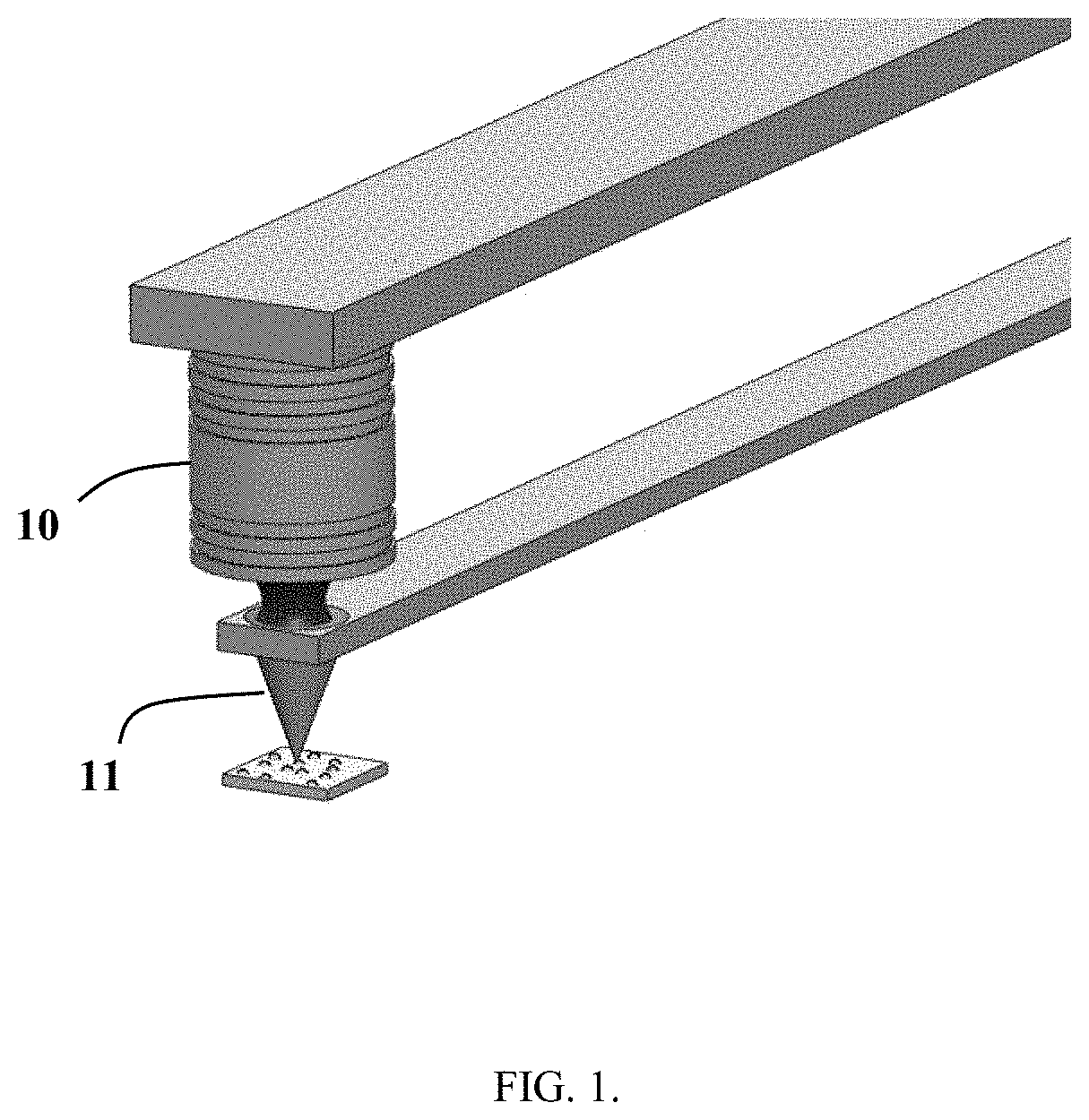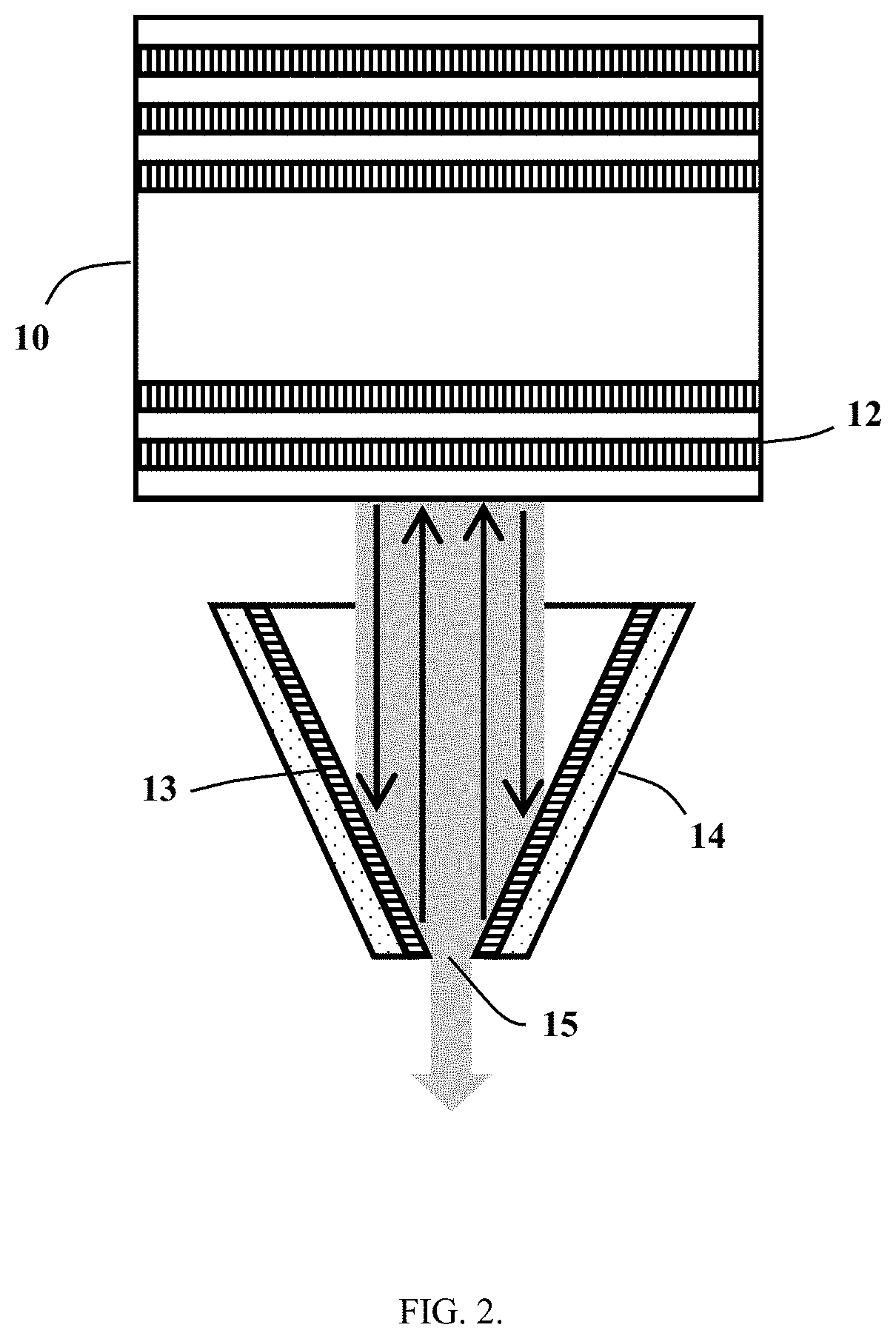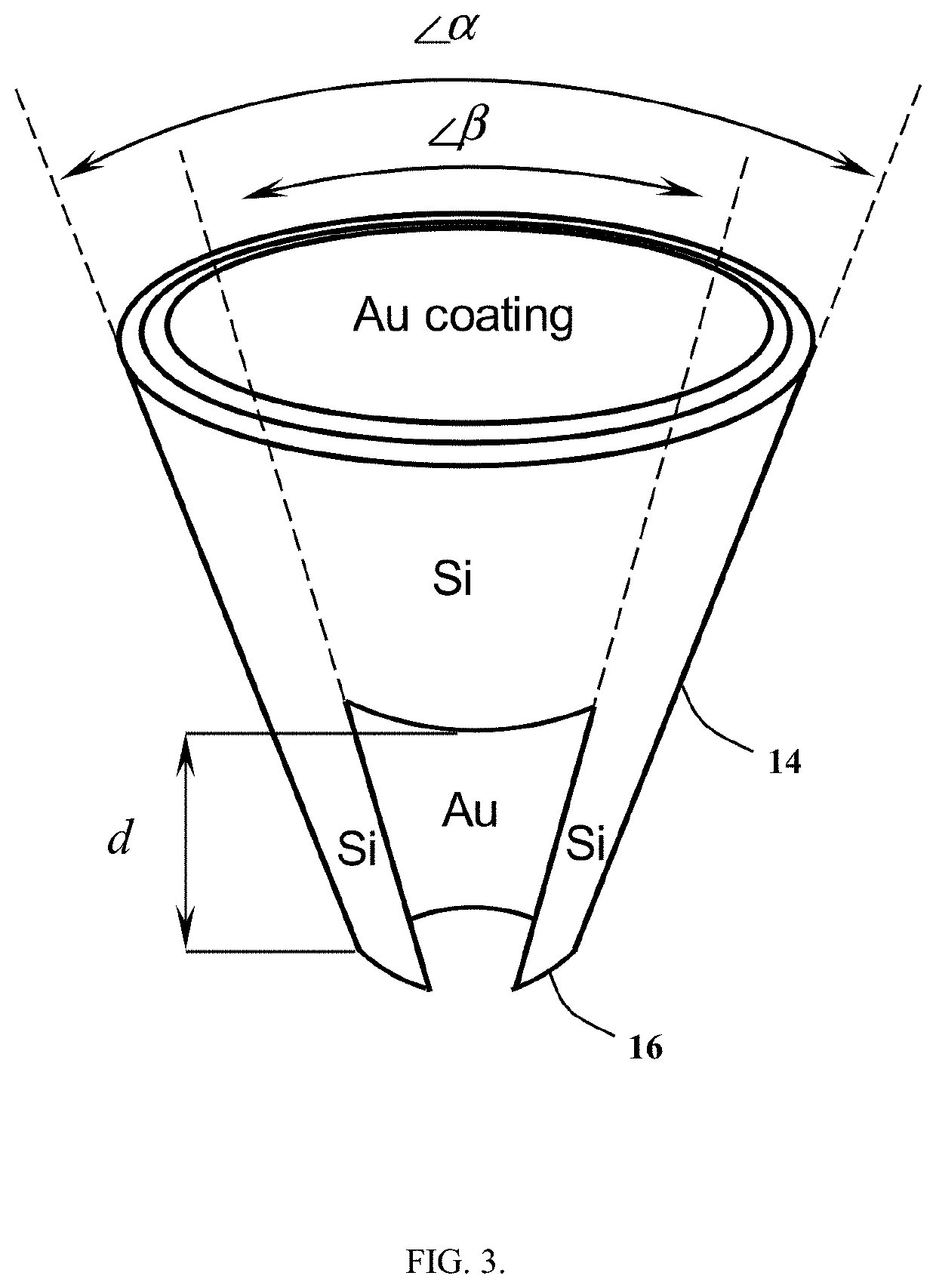VCSEL-based resonant-cavity-enhanced atomic force microscopy active optical probe
a technology active optical probes, which is applied in the field of atomic force microscopy (afm) and nearfield optical microscopy probes, can solve the problems of inability to meet the needs of scanning probes, low efficiency and sensitivity of conventional raman spectroscopy, and large background signal, and achieve enhanced light transmission through the tip aperture, enhanced light transmission, and enhanced light transmission
- Summary
- Abstract
- Description
- Claims
- Application Information
AI Technical Summary
Benefits of technology
Problems solved by technology
Method used
Image
Examples
embodiment 1
[0026]The concept of the resonant-cavity-enhanced AFM active optical probe (RCE AAOP) is illustrated in FIG. 1, where the probe combines a light source 10 (VCSEL) and a special aperture NSOM probe 11 in the external-resonant-cavity configuration. In this configuration, the top (output) DBR mirror 12 of the VCSEL 10 and the gold-coated surface 13 of the tip 14 of the special aperture NSOM probe form a high-quality external Fabry-Pérot cavity employed for enhanced transmission of light through the tip aperture 15 (FIG. 2). In this external-resonant-cavity configuration, we use the effect of external-resonance-enhanced transmission of light through sub-wavelength holes [Kalkum 2010] that allows up to 100× enhanced light transmission through the tip aperture. The large intensity of the laser light that builds up in the external cavity is efficiently transmitted through the tip aperture 15 and used for excitation of the sample at the nanoscale.
[0027]The special NSOM aperture probe may ha...
embodiment 2
[0032]In another embodiment of the present invention, the resonant-cavity-enhanced AFM active optical probe is that described in Embodiment 1, but the laser source is an optically pumped VCSEL (FIG. 6). The optically pumped VCSEL 18 generates light at the wavelength λ2 that is longer that the wavelength λ1 of the optical pumping. A special notch (band-stop) or longpass edge filter 19 is placed inside the external cavity formed by the top (output) DBR mirror 12 of the VCSEL and the gold-coated surface 13 of the tip 14 of the special aperture NSOM probe to prevent the optical pumping (light at λ1 wavelength) from reaching the surface of the sample (FIG. 6).
[0033]In the described embodiment of the present invention, NSOM and TERS measurements are enabled by applying far-field optics to collect the scattered light and direct it to a combination of an external Raman spectrometer and an external photodetector. The described embodiment is advantageous for Raman measurements that would bene...
embodiment 3
[0034]In another embodiment of the present invention, an arrangement of several commercial reverse-biased VCSEL structures are employed as near-field resonant-cavity-enhanced (RCE) photodetectors 20. They are mounted in very close proximity to a VCSEL source 10 on the same x-y-z piezo stage 21 attached to a special AFM probe holder 22 for precise positioning relative to the special aperture NSOM probe tip 14 (FIG. 7). Being an integral part of the AFM cantilever 23, the probe tip is attached to the special AFM probe holder 22 independently. The RCE photodetectors 20 are designed for detection in a narrow spectral range around the wavelength at which the VCSEL source 10 emits.
[0035]In the described embodiment of the present invention, no far-field optics is necessary for signal collection / detection. NSOM measurements are enabled in the near-field by applying the VCSEL excitation source 10 and the near-field RCE photodetectors 20 for signal detection.
PUM
| Property | Measurement | Unit |
|---|---|---|
| atomic force microscopy | aaaaa | aaaaa |
| AFM | aaaaa | aaaaa |
| wavelength | aaaaa | aaaaa |
Abstract
Description
Claims
Application Information
 Login to View More
Login to View More - R&D
- Intellectual Property
- Life Sciences
- Materials
- Tech Scout
- Unparalleled Data Quality
- Higher Quality Content
- 60% Fewer Hallucinations
Browse by: Latest US Patents, China's latest patents, Technical Efficacy Thesaurus, Application Domain, Technology Topic, Popular Technical Reports.
© 2025 PatSnap. All rights reserved.Legal|Privacy policy|Modern Slavery Act Transparency Statement|Sitemap|About US| Contact US: help@patsnap.com



